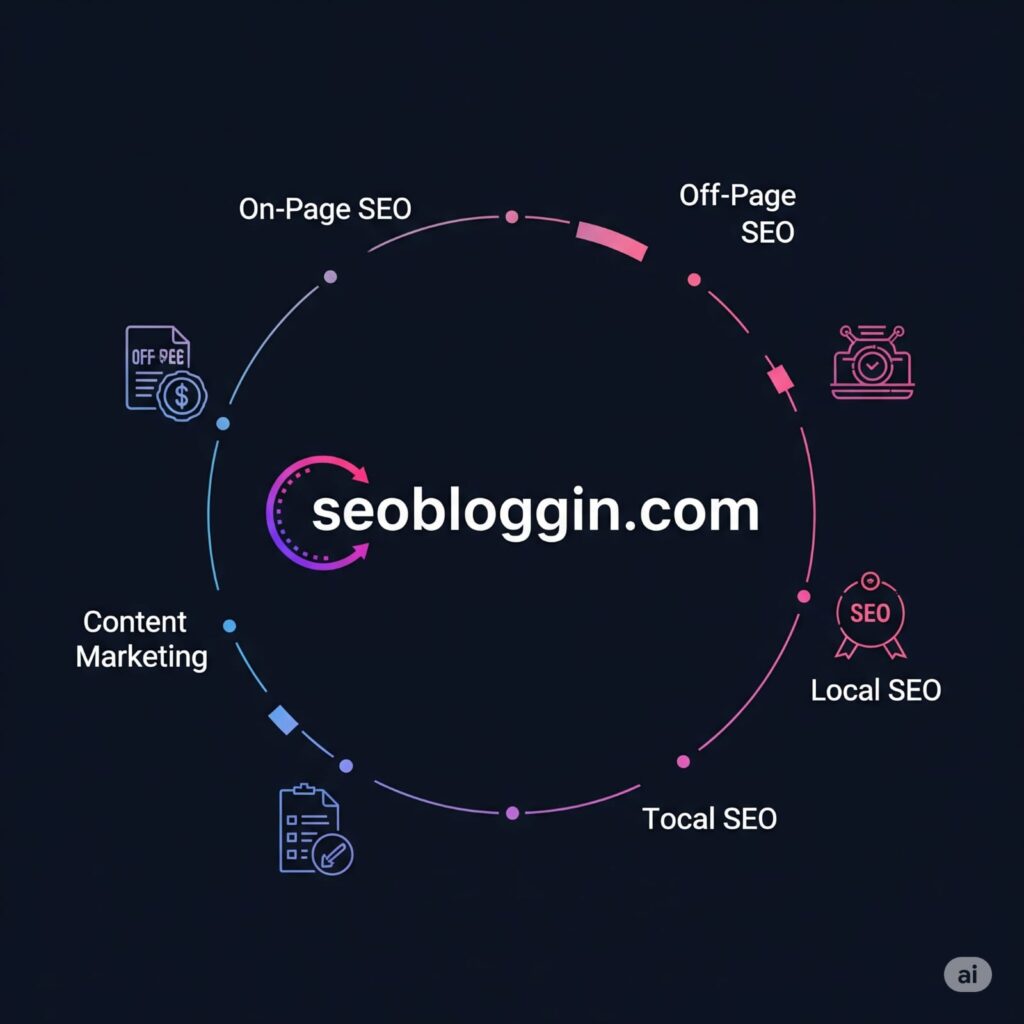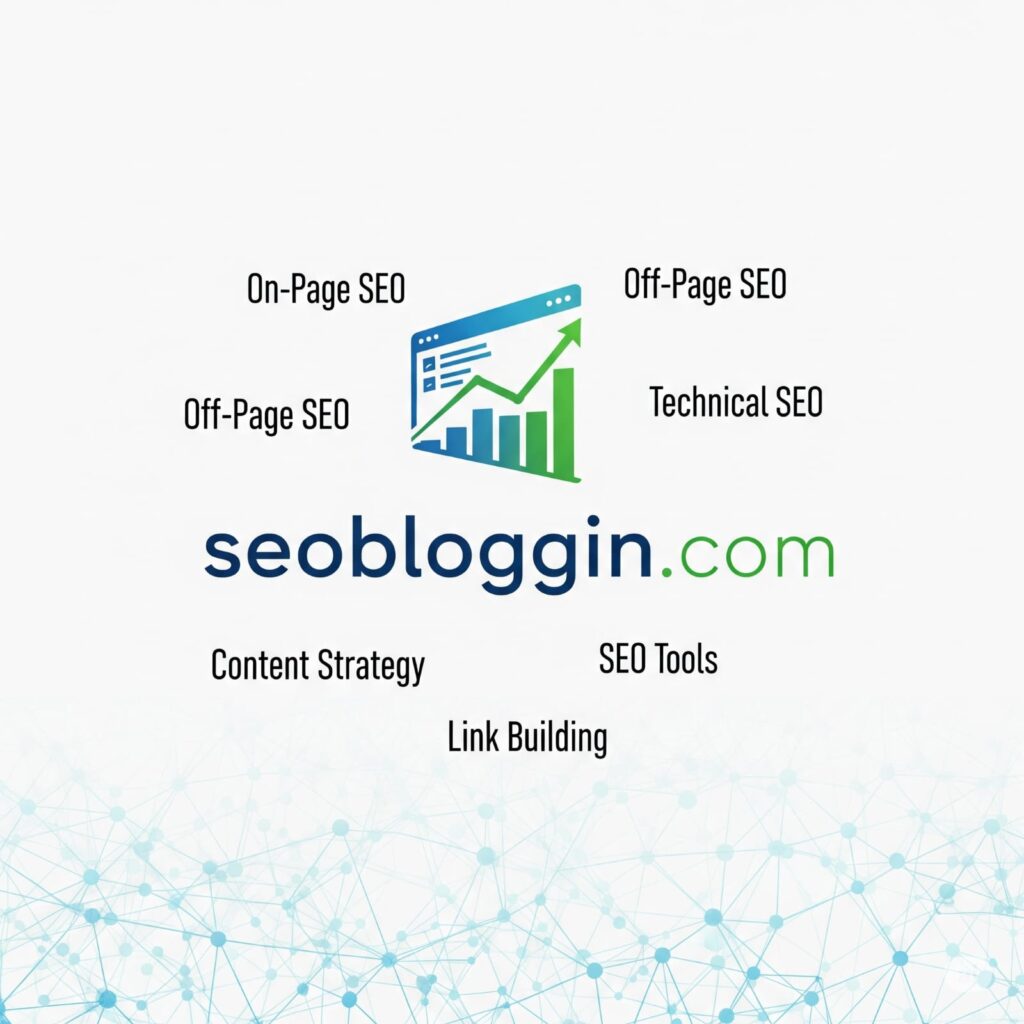Table of Contents
What is Blogging in 2025?
Let’s face it—blogging isn’t dead. In fact, it’s evolving faster than ever. In 2025, blogging is not just about writing journal-style posts anymore. It’s about building an online presence, solving problems, teaching something valuable, or even growing a full-time business from your laptop. With AI tools, voice search, and visual content dominating, blogging has taken a new form—but at its core, it’s still about connecting with people through valuable content. If you’re serious about blogging for beginners, social media is your best friend. Platforms like Instagram, Twitter, Pinterest, and LinkedIn are goldmines for traffic. Share:
- Blog teasers
- Infographics
- Quotes from your post
- Reels or short videos
Pro Tip: Repurpose your blog post into smaller content pieces to multiply reach.
Why Blogging is Still Relevant?
You might wonder: “Is blogging even worth it anymore?” Absolutely! Blogging continues to be one of the most cost-effective ways to generate organic traffic, build authority in your niche, and create passive income streams. With smart SEO and consistent efforts, even beginners can build a successful blog in 2025. It’s all about strategy, not magic.
Who Can Start a Blog?
Here’s the good news: anyone can start blogging. Whether you’re a student, a homemaker, a digital nomad, or a business owner, blogging doesn’t require a degree or a huge investment. If you can express your thoughts and help others through your content, you’re already on the right path. All it takes is the right roadmap, and that’s exactly what this guide is.
Setting Up Your Blog
Choose a Niche You’re Passionate About
This step can make or break your blogging journey. Choose a topic you love AND that people search for. Your passion keeps you motivated, and audience demand brings in the readers. Great niches for 2025 include:
- Personal finance
- Mental health
- AI tools and tech
- Travel vlogging
- Food and health
- Blogging for beginners (see what we did there?)
Choosing a Domain Name That Represents Your Brand Identity
Think of your domain name as your blog’s digital home address—it should be:
- Memorable
- Easy to spell
- Short and brandable
Pro tip: Use .com if possible and avoid hyphens or numbers.
Best Blogging Platforms for Beginners
For 2025, here are the top beginner-friendly blogging platforms:
- WordPress.org (Most flexible and powerful)
- Wix (Drag-and-drop simplicity)
- Blogger (Good for basic blogs)
- Medium (Great for writers, but limited control)
If you’re serious about blogging, WordPress.org + a good host is the best combo.
Hosting Options – Free vs Paid
Free hosting sounds tempting, but it has limitations. If you want full control and SEO success, go with paid hosting like:
- Hostinger
- Bluehost
- SiteGround
It’s affordable, reliable, and helps your blog grow without tech headaches.
Designing Your Blog
Importance of a Clean and Mobile-Friendly Design
First impressions matter. A clean layout that looks great on mobile devices builds trust and keeps readers engaged. Choose a theme that’s:
- Responsive
- Fast-loading
- Customizable
- SEO-ready
Themes and Plugins That Make Life Easier
Here are beginner-friendly tools:
- Themes: Astra, GeneratePress, Kadence
- Plugins:
- Rank Math SEO – For easy SEO setup
- WPForms – To create contact forms
- Smush – For compressing images
- Elementor – Drag-and-drop design
Basic Pages Every Blog Needs
Don’t skip these must-have pages:
- About Me
- Contact Page
- Privacy Policy
- Disclaimer (especially for affiliate marketing)
These pages build credibility and keep you legally safe.

Content is King – Start Writing
What to Write as a Beginner Blogger
You don’t need to reinvent the wheel. Start with:
- How-to guides
- Listicles (e.g., “10 Tips for Beginners”)
- Reviews (products or tools)
- Personal stories
- Tutorials
Find out what your audience is searching for and write helpful, easy-to-understand posts.
How to Write SEO-Friendly Blog Post
Keyword Research Basics
Use tools like:
- Google Keyword Planner
- Ubersuggest
- AnswerThePublic
- SEMrush (for more advanced users)
Focus on long-tail keywords such as ‘SEO tips for beginners‘ or ‘how to write SEO-friendly blog post‘—they have lower competition and are easier to rank on Google.
Blog Post Structure (Title, Headings, Meta, etc.)
Structure = readability = SEO boost
Use:
- H1 for title
- H2 for major sections
- H3/H4 for subpoints
Also, write a compelling meta description and include your main keyword naturally in: - First 100 words
- Headings
- Image alt text
- Conclusion
Avoiding Keyword Stuffing
Don’t force keywords. Write naturally. Search engines are smart—if your post helps users, it ranks. Period.
Optimize Your Blog for Search Engines
On-Page SEO Basics
Optimize what’s on your site:
- Use keywords smartly
- Internal linking
- Image optimization
- Meta titles and descriptions
- Fast loading speed
Off-Page SEO Techniques
This is about building authority:
- Guest posting
- Social sharing
- Getting backlinks from other blogs
Importance of Technical SEO
Keep your site healthy:
- Mobile responsiveness
- SSL (https)
- XML sitemap
- No broken links
- Structured data (schema)
Use Google Search Console to monitor everything.
Blog SEO Checklist 2025
Updated SEO Practices in 2025
SEO in 2025 is user-first:
- Write for people, optimize for Google
- Voice search is rising—use natural language
- Visual content matters—infographics, videos
- E-E-A-T (Experience, Expertise, Authority, Trustworthiness) is crucial
Must-Have Tools for Blog Optimization
- Rank Math SEO
- Google Search Console
- Ahrefs Webmaster Tools (Free version available)
- PageSpeed Insights
- Grammarly for proofreading
Common SEO Mistakes to Avoid
- Ignoring mobile optimization
- Thin or duplicate content
- Not updating old posts
- Overusing keywords
- Ignoring internal linking

Blog SEO Checklist 2025
If you’re serious about blogging for beginners, mastering SEO is non-negotiable. This blog SEO checklist 2025 will help your blog get noticed by Google and other search engines.
✅ On-Page SEO Checklist:
- Include your main keyword in the title, meta description, first 100 words, and headings
- Use short, clean URLs (e.g., yourdomain.com/seo-tips-beginners)
- Use alt text for all images
- Connect your posts with internal links to boost page views and user experience.
- Write powerful meta titles and descriptions that motivate users to click.
✅ Technical SEO Checklist:
- Use HTTPS (SSL certificate)
- Mobile responsiveness is a must
- Page speed should be optimized (use PageSpeed Insights)
- Submit your sitemap to Google Search Console
- Fix crawl errors regularly
SEO Tools for New Bloggers
Don’t worry—you don’t need to be an expert. With the right tools, even a beginner can do powerful SEO.
Here are the best SEO tools for new bloggers in 2025:
Free Tools:
- Rank Math SEO (This lightweight WordPress plugin helps you handle SEO settings with ease and confidence.)
- Google Search Console (track and fix indexing issues)
- Ubersuggest (keyword research, backlink data)
- Google Keyword Planner (keyword ideas & volume)
- AnswerThePublic (understand what people are searching)
Premium (but worth it):
- Ahrefs – Backlink tracking, competitor analysis
- SEMrush – All-in-one SEO suite
- Surfer SEO – Optimize your blog posts with Surfer SEO’s actionable, data-powered suggestions.
Using even 2–3 of these can transform how fast you grow.
How to Increase Blog Traffic (Fast and Smart)
Every beginner asks this:
“How do I pull in the right audience and keep them coming back to my blog?”
Here’s how to increase blog traffic even if you’re starting from zero:

✅ Use Pinterest and Quora
These are goldmines for free traffic.
- Create pin-friendly blog images
- Answer relevant questions on Quora and add your blog link to drive interested readers to your site.
✅ Share on Social Media
Post snippets, quotes, or infographics from your blog on:
- Facebook Groups (niche-specific)
✅ Collaborate with Other Bloggers
Guest posting and getting featured by others can expand your blog’s visibility.
✅ Optimize Every Post for SEO
Use your keyword naturally, structure posts well, and update regularly. SEO drives consistent, passive traffic to your blog over time.
How to Rank a Blog on Google
To rank a blog post on Google, especially as a beginner, you need to be strategic, not spammy.
✅ Here’s the Ranking Formula:
1. Choose the Right Keyword
Target keywords with low competition and high intent, like:
- “How to write SEO SEO-friendly blog post“
- “SEO tips for beginners 2025“
2. Write High-Quality Content
Google loves content that:
- Solves problems
- It is easy to read
- Keeps users engaged
Use short sentences, bold important points, and include helpful images or videos.
3. Use Schema Markup
With Rank Math or Yoast, you can add schema like:
- Article
- FAQ
- How-To
This improves visibility in search results.
4. Build Backlinks
Get links from other blogs in your niche. It tells Google you’re trustworthy.
5. Update Old Posts
Keep posts fresh by adding new stats, better headlines, or new keywords.
Consistency, good SEO, and patience = Google rankings.
10. Conclusion
Blogging in 2025 isn’t just a trend—it’s a powerful platform to build your personal brand, help others, and earn online. If you’re serious about blogging for beginners, this guide gave you the full roadmap—from setting up your blog to mastering how to write SEO SEO-friendly blog post, using the blog SEO checklist 2025, applying SEO tips for beginners, and learning the best SEO tools for new bloggers to increase blog traffic and ultimately rank your blog on Google.

